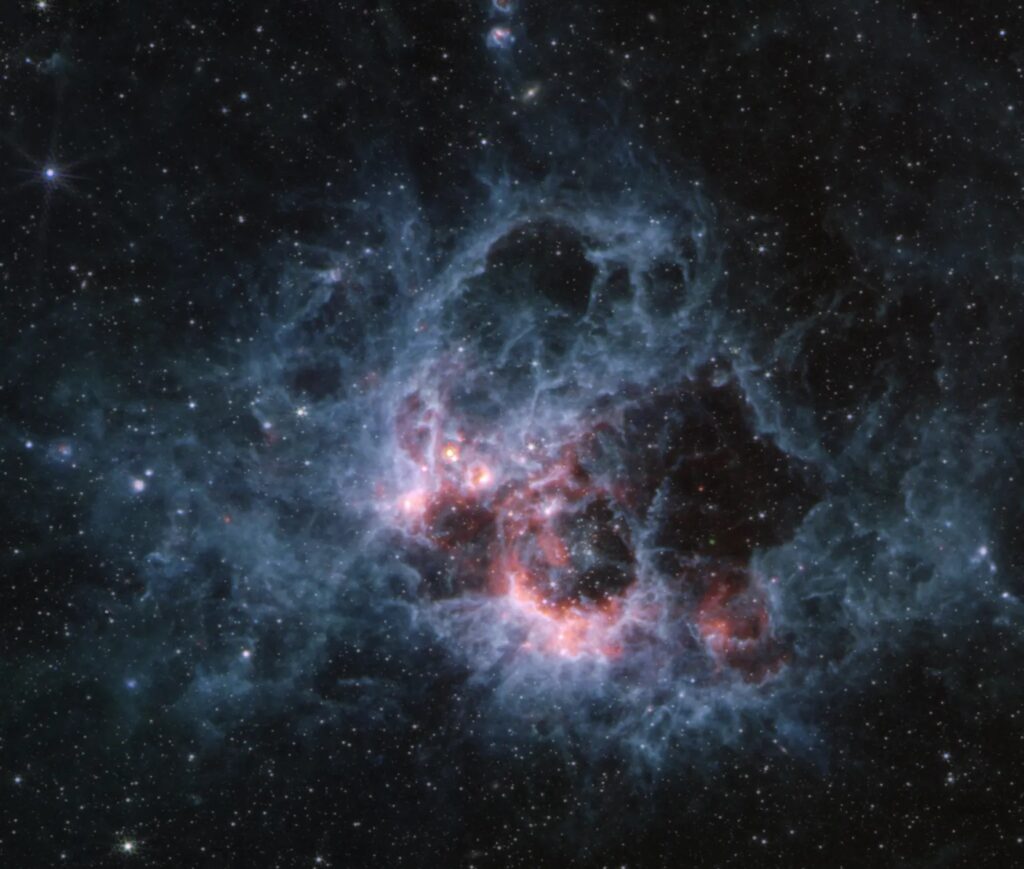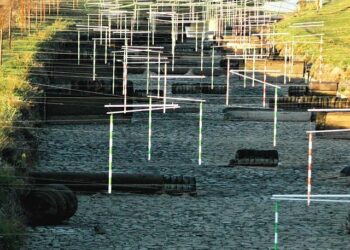The surroundings in which stars form and their formation are extensively researched and still shrouded in mystery. Thanks to NASA’s James Webb Space Telescope, these processes are now becoming more apparent than ever.
The Triangulum galaxy (M33), located 2.73 million light-years from Earth, contains the star-forming area NGC 604, as shown in two new photos obtained by Webb’s NIRCam and MIRI detectors. These pictures give a detailed picture of star formation by showing stretched-out gas filaments and voids filled with bubbles.
More than 200 of the hottest and most massive star types, such as B-types and O-types, may be found in NGC 6004. These stars may have a mass greater than 100 times that of our Sun and are still in the early phases of their existence. There isn’t a region like this within our own Milky Way galaxy, and this concentration of massive stars is uncommon in the neighboring universe.
Due to its proximity and high density of massive stars, NGC 604 offers astronomers a rare chance to examine these objects early in their existence.
In Webb’s near-infrared NIRCam image, we observe vivid red tendrils and clumps of emission spreading from clearings or big bubbles in the nebula. The surrounding gas is ionized by ultraviolet light, giving it a white and blue glow, and the stellar winds of young, bright stars carve out the features.
The image shows polycyclic aromatic hydrocarbons (PAHs), which are carbon-based compounds, as brilliant orange streaks. Although the origin of these molecules is unknown, they play a significant role in the development of stars and planets and the interstellar medium. The more excellent gas known as molecular hydrogen, which creates an ideal setting for star formation, is represented by deeper red patches.
 This image from NASA’s James Webb Space Telescope’s MIRI (Mid-Infrared Instrument) of star-forming region NGC 604 shows how large clouds of cooler gas and dust glow in mid-infrared wavelengths. This region is home to more than 200 of the hottest, most massive kinds of stars, all in the early stages of their lives.
This image from NASA’s James Webb Space Telescope’s MIRI (Mid-Infrared Instrument) of star-forming region NGC 604 shows how large clouds of cooler gas and dust glow in mid-infrared wavelengths. This region is home to more than 200 of the hottest, most massive kinds of stars, all in the early stages of their lives.
NASA, ESA, CSA, STScI
Webb’s high resolution also provides fresh perspectives on previously unconnected aspects. For instance, two young, brilliant stars linked by diffuse red gas are seen piercing holes in the dust above the core nebula. These structures were visible as distinct splotches in NASA’s Hubble Space Telescope photos.
Scientists could observe this active region from a different angle because of Webb’s mid-infrared image of NGC 604. Larger clouds of more excellent gas and dust glow brighter at these wavelengths than hot stars, making fewer stars visible in this image. Red supergiants, which are hundreds of times larger than our Sun in diameter, are an excellent type of star that we can see in the sky. Furthermore, in the MIRI image, some of the background galaxies visible in the NIRCam image fade.
>>> Read full article>>>
Copyright for syndicated content belongs to the linked Source : Tech Explorist – https://www.techexplorist.com/nasa-webb-peers-tendrils-ngc-604/81938/































